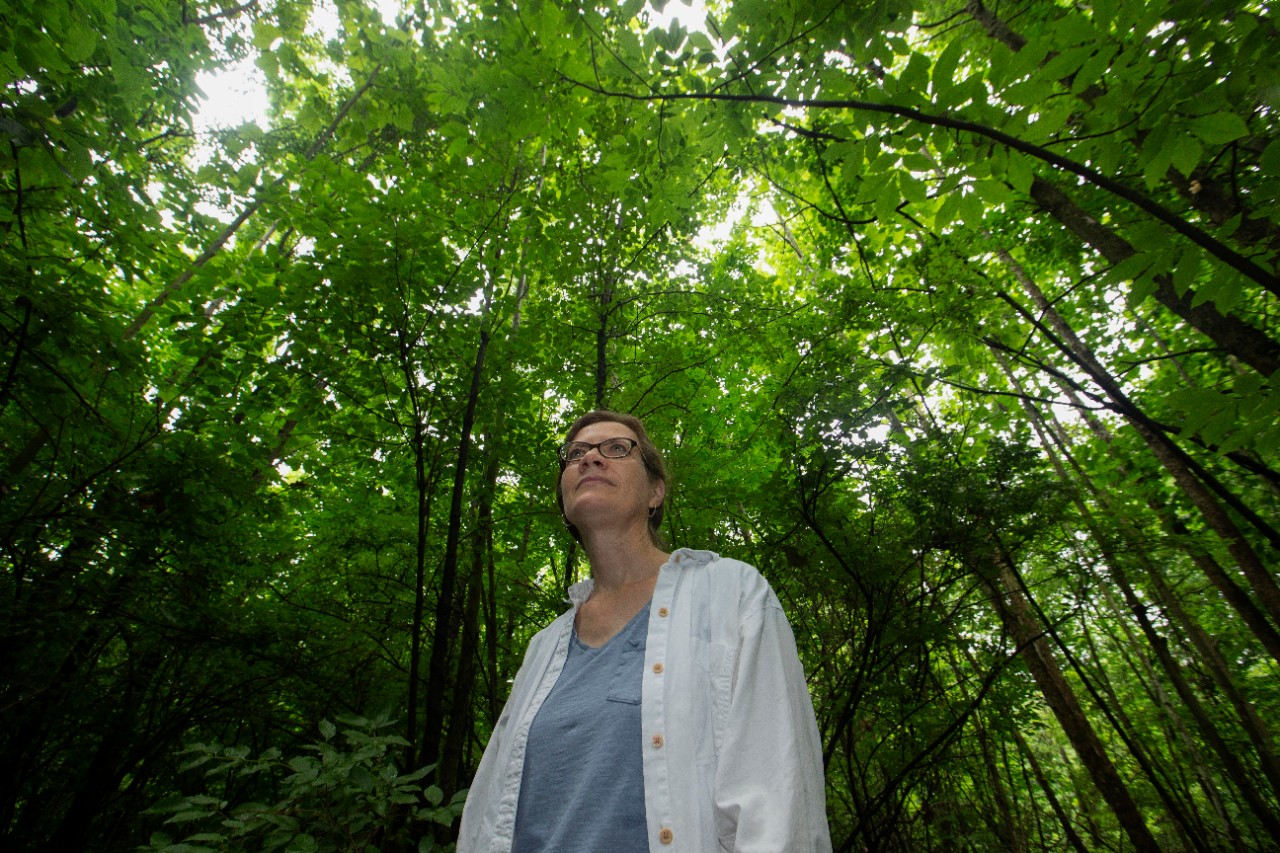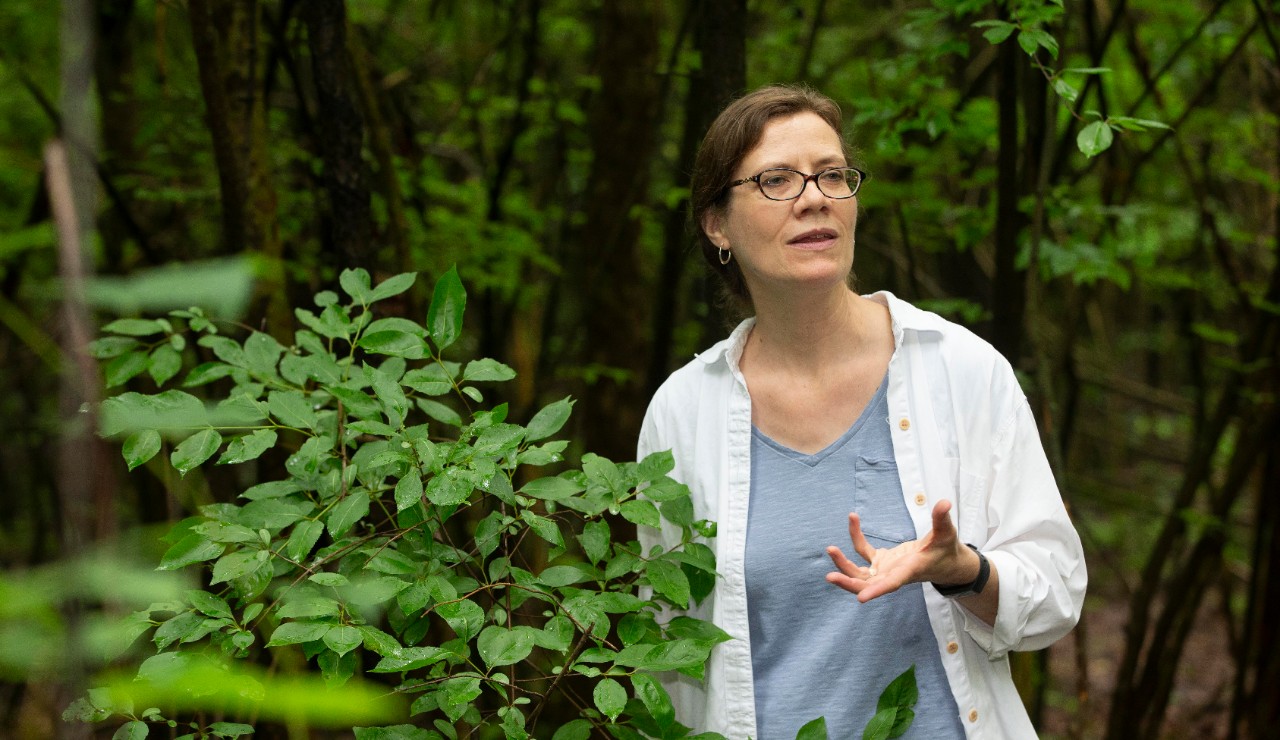
Indianapolis Star: Carmel replacing Callery pear trees
Indiana city is taking proactive steps to replace invasive trees
The Indianapolis Star turned to a University of Cincinnati biologist to explain how a nonnative tree was able to reproduce in the wild.
Callery pear trees were introduced to the United States from China. Hearty and fast growing, the trees with the pretty white spring blossoms became a favorite of landscapers and nurseries in the 1960s when they were planted across neighborhoods and commercial developments.
Theresa Culley, a professor and head of the Department of Biological Sciences in UC's College of Arts and Sciences, said the Bradford pear tree is a clone and can't reproduce with other Bradford pear trees.
But this variety was notorious for weak trunks that split when they grew too top heavy, so U.S. horticulture introduced sturdier varieties. And these varieties could pollinate Bradford pear trees.
“Really, it’s the fact that people started to plant a mix of different cultivated varieties that caused the problem,” Culley told the Indianapolis Star.
“If you get a different tree it sends its pollen to Bradford, suddenly Bradford recognizes a different genetic individual and fertilizes,” Culley said.
Soon wild pear trees began showing up along highways and in forest clearings, Culley said.

University of Cincinnati Professor Theresa Culley advises the state of Ohio about nonnative invasive plants that could pose economic or environmental burdens. Photo/Joseph Fuqua II/UC
One Indiana city, Carmel, is replacing Callery pear trees with native species. The city cut down dozens of pear trees in one neighborhood this year alone.
Ohio banned the sale or distribution of Callery pear trees to protect native forests.
Culley serves on the Ohio Invasive Plants Council and the Ohio Invasive Plant Advisory Committee, which advises the Ohio Department of Agriculture on regulation.
To date, the committee has identified more than three dozen nonnative plants that are not permitted to be sold or planted in the state because of their potential to cause economic or environmental harm. These include purple loosestrife, Japanese stiltgrass and amur honeysuckle, another plant that is taking over many Ohio forests.
Read the Indianapolis Star story.
Featured image at top: University of Cincinnati Biology Department Head Theresa Culley stands in a grove of wild-growing Callery pear trees at the Harris Benedict Nature Preserve. Photo/Joseph Fuqua II/UC
Related Stories
History Department Lecture
January 9, 2002
Lecture by Allan W. Winkler, Miami University, Oxford on "Urban America in World War II: Cincinnati as an example" at the Cincinnati Museum Center at 7:30pm.
UC Research Ranking Climbs
January 10, 2002
The University of Cincinnati moved up in two different national rankings established by the National Science Foundation (NSF) to compare college and university research efforts.
History Department Lecture
January 17, 2002
Lecture by Leslie Adelson, Cornell University, will deliver a Taft lecture titled "Back to the Future and Beyond 'Two Worlds':Turkish Lines of Thought in Contemporary German Literature and Memory Work" at 3:00pm in the Max Kade German Cultural Center in Old Chemistry.
New Appointments in McMicken Administration
January 21, 2002
The college is very pleased to announce two new appointments.
Sign Up for the Discovering A&S Elective
January 24, 2002
Parent's Asking, "What does someone do with THAT major?" Don't know all your options? Sign up for a 2 credit hour elective where you can meet A&S faculty, emeriti faculty, as well as, alumni.
Three of Four UC Fulbrights Scholars from McMicken
January 28, 2002
Tainted water supplies in Bangladesh, international security and missile defense, transformations in Mexico and greater understanding of India - this varied list sums up the work of four Fulbright Scholars at the University of Cincinnati who are concentrating on real-life issues involving our neighbors around the world.
Prominent Line-Up Examines Race in 2002 Ropes Series
January 31, 2002
The issue of race will receive one of the most intensive examinations undertaken in Cincinnati since the April riots when the University of Cincinnati Department of English launches its Ropes series in January and February 2002.
Nominate a Distinguished Alumni
January 31, 2002
The Purpose of the Distinguished Alumni Awards is to recognize graduates of the McMicken College of Arts and Sciences for outstanding achievements.
UC Physicists Play Important Role in Experiments That Provided New Understanding of Neutrinos
January 31, 2002
Three physicists at the University of Cincinnati played a key role in recent experiments which provided a surprising new understanding of a tiny subatomic particle known as the neutrino.
Angelene Jamison-Hall: Publishing Award
February 13, 2002
An unpublished novel by Angelene Jamison-Hall won first place in the new writing contest sponsored by River View Publishing in Riverside, Iowa.
